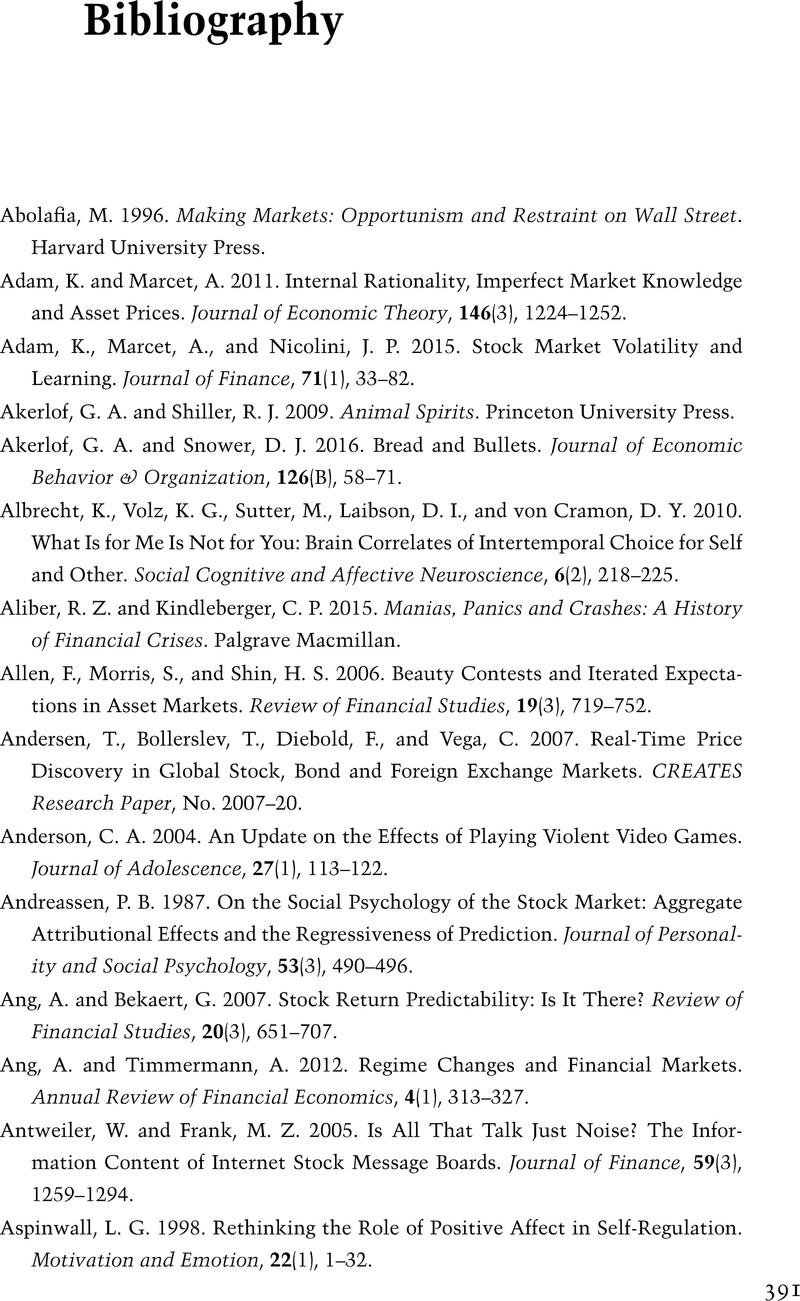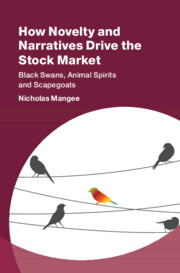Book contents
- Frontmatter
- Dedication
- Contents
- List of Figures
- List of Tables
- Preface
- Acknowledgments
- PART I NOVELTY, NARRATIVES, AND INSTABILITY
- PART II NEWS ANALYTICS AS A WINDOW INTO STOCK MARKET INSTABILITY
- PART III EMPIRICAL EVIDENCE FOR THE NOVELTY-NARRATIVE HYPOTHESIS
- Appendix A R Code for Bloomberg News Word Cloud and Histogram
- Appendix B The Bloomberg News KU Stock Market Project
- Appendix C RavenPack Terms for Event Output Record
- Appendix D Unscheduled Events from RavenPack
- Bibliography
- Index
- References
Bibliography
Published online by Cambridge University Press: 23 September 2021
- Frontmatter
- Dedication
- Contents
- List of Figures
- List of Tables
- Preface
- Acknowledgments
- PART I NOVELTY, NARRATIVES, AND INSTABILITY
- PART II NEWS ANALYTICS AS A WINDOW INTO STOCK MARKET INSTABILITY
- PART III EMPIRICAL EVIDENCE FOR THE NOVELTY-NARRATIVE HYPOTHESIS
- Appendix A R Code for Bloomberg News Word Cloud and Histogram
- Appendix B The Bloomberg News KU Stock Market Project
- Appendix C RavenPack Terms for Event Output Record
- Appendix D Unscheduled Events from RavenPack
- Bibliography
- Index
- References
Summary

- Type
- Chapter
- Information
- How Novelty and Narratives Drive the Stock MarketBlack Swans, Animal Spirits and Scapegoats, pp. 391 - 408Publisher: Cambridge University PressPrint publication year: 2021



